Are you tired of waking up to discover stains on your pillow and sheets? It’s a common problem that many people face, and I can definitely relate. I used to struggle with removing stains from my white sheets as well. My bed is one of my favorite places in the house, so I tend to do more than just sleep there. I eat, watch movies, work, and do all sorts of crazy things from the comfort of my bed. As a result, I’ve dealt with various stains, including yellow stains, oily stains, and even period blood stains. It can be quite embarrassing, but thankfully, I’ve learned effective methods to tackle these stains, which I’ll share with you in this article.
A lot of people prefer white sheets because any unwanted spots or stains are immediately visible, making it easier to take action and clean them promptly. However, even with regular washing, white sheets can develop a yellowish tint over time, especially if stains occur frequently. These stains often come from body oils, sweat, and dead skin, which leave noticeable marks on the sheets.
In this article, I’ll provide you with tips on how to remove various types of stains from your white sheets. These methods are based on years of experience and have proven to be effective. The first step is to identify the main culprit behind the stains and then address it accordingly. If you’ve been struggling to find solutions for your sheet stains, you won’t regret reading through this content. So, keep reading to learn more.
How To Remove Stains From White Sheets

Save this home remedy to remove sweat stains from white sheets and any white fabrics.
In the hottest months, our body expels the overload of heat through sweat and this tends to stain the white sheets.
Removing the yellowish color that penetrates the fibers of our white sheets can give us some headaches but don’t worry, we have the solution!
You may also like this: How To Remove Oil Stains From Shirts
Here are the elements that will help you achieve the goal. You can find them very easy and most of you will already have them at home. See what you need to effectively make your sheets look like new
Items you need
- Vinegar (1 cup)
- Baking soda (1 1/2 cups)
- Salt (1 tablespoon)
- Hydrogen peroxide (1 tablespoon)
3 easy steps to always brand new white sheets
First of all, prepare a bowl full of vinegar and add two cups of hot water to it. Then submerge your white sheets and let them rest for about 20 minutes.
One
Mix the cup and a half of baking soda, the tablespoon of salt and the hydrogen peroxide until we get a paste. We drain the white sheet after removing it from the bowl and place the mixture on the surface of the stains. For it to take effect we have to let it rest for 20 minutes.
two.
When those 20 minutes have passed, we remove the paste from the mixture, we put the white sheets with the rest of the laundry and the unwanted yellowish stains will disappear.
three
Enjoy the cleanliness and whiteness of your sheets , they will look like the first day.
Have you tried this homemade whitening recipe that is passed down from generation to generation? We read you!
How To Remove Oil Stains From Shirts

Apply liquid dishwashing detergent to the entire grease stain. You can also use shampoo in this way since it is designed for body fat, so it should be useful for this purpose.
You can also use a bar of soap. Any bar of hand or body soap will be useful (make sure that it does not have additives that can make cleaning difficult; one like Dove would not be suitable).
For very stubborn grease stains, use laundry soaps. Dampen with water (or ammonia to provide extra potency against grease), then rub the stain with the bar until enough detergent has been transferred to form a lot of foam.
You can also grate the bar of soap and apply the powder or resulting pieces to the stain after moistening it.
Are your tried to remove ink stain? read this: How To Remove Ink Stain From Clothes
If you are going to use a colored detergent, you will have to dilute it so that it does not stain your clothes.
In the case of stubborn stains, if you use an old toothbrush, this will help to combat the stain better than you would by hand alone. You can also use an old foot or nail brushes and small scrub brushes for cleaning.
First, rinse the area with water, then you can apply vinegar (optional). Vinegar is a natural cleaning agent that is used in various applications.
However, it lowers the alkalinity of soaps or detergents, making them less effective; therefore, do not use detergents or soaps together with any vinegar.
If you wish, mix one-part vinegar with two parts water, and soak the garment in this mixture, then rinse the vinegar and use the detergent, shampoo, or soap method indicated above.
Wash the garment alone with laundry detergent. Follow the washing instructions provided on the garment label to the letter.
How to remove yellow stains from white cotton sheets

Don't give up on trying to remove stains from bedding. Learn how to remove that dirt that seems impossible and leave your bedding as new!
Do you want to have sheets like your mother’s? Don’t give up on that radiant white: we show you its tricks to make bedding look brand new.
Mother tricks do not fail!
With the passage of time, many home textiles tend to yellow and, no matter how much you apply all the remedies available and for having, the white color does not recover its splendor. For this, we have compiled the best tips to whiten yellowed sheets and wash your bedding without losing its soft touch and maintaining its appearance.
Tricks to wash the sheets
1. ALLY YOURSELF WITH COLD WATER AND BANISH THE BLEACH
- Cold water will help you maintain a pristine white: choose a maximum temperature of 30 degrees.
- Before, do not forget to take a good look at the labels to have more information.
- If you can, hang the clothes in the sun well stretched: this will improve their bleaching.
- Avoid using bleach or squirting ammonia – it is quite damaging to the fibers and can create yellowish streaks and marks on the fabric over time.
2. USE VERY SIMPLE ‘ECO’ TRICKS
- When the yellowish areas persist on sheets or a quilt, take advantage of lemon and sodium percarbonate (€ 5.27 1 kg at mundohuerto.es ).
- Mix 2 tablespoons of percarbonate and 250 ml of lemon juice, and dilute it in a liter of hot water.
- Let the white clothes soak for half an hour; during that time, stir it from time to time.
- Finish by washing it in the washing machine with the usual program, adding 2 teaspoons of sodium percarbonate in the usual detergent.
- Wait for the wash to finish and you will see what a difference.
3. REMOVE YELLOW STAINS WITH HYDROGEN PEROXIDE OR LEMON
- Hydrogen peroxide (De Forest, € 5.29 / 500 ml, at carethy.es ) is an excellent bleach that removes yellow stains.
- Pour half a cup into your washing machine’s detergent bowl and voila!
- You can also use lemon juice: squeeze 2 lemons and add 1 liter of very hot water, submerge the clothes and leave it for 30 minutes.
- Afterwards, wash and lay out in the sun. Super white!
4. HOW TO WASH DELICATE SHEETS?
- Be careful with silks and the like.
- Avoid yellowing by washing them with warm water.
- If they have lost their whiteness, try immersing them in cold water with 2 tablespoons of milk and a few drops of hydrogen peroxide per liter of water.
- Rinse them and put them to dry in the shade.
Tips for washing bedding and making it last longer
QUILT
- How often to wash it? Take advantage of the hot months for cleaning: in spring or with the arrival of summer.
- How to wash it? Look at its composition: you will know if you can put it in your washing machine or if you should take it to the dry cleaner.
QUILT
- How often to wash it? At least once a year and if possible, every 6 months to eliminate dust mites.
- How to wash it? Both the synthetics and the feathers admit washing machine, in short cycle and at low revolutions.
BLANKETS
- How often? The fleece ones need to be washed quite often to make them smell good.
- How? They wash well in the washing machine, on a low temperature delicates program.
BED CUSHIONS
- How often? If they do not have stains, you can do it every 2 months and air them daily to remove dust.
- How? If they are removable, wash the covers according to the label. If they allow washing machine, in cold water.
The star trick to hang the sheets
Hang the sheets as soon as possible, still, a bit damp, very stretched. This way it will be easier to iron them. When you do, steam iron water: you will notice the difference.
How to remove blood from white sheets
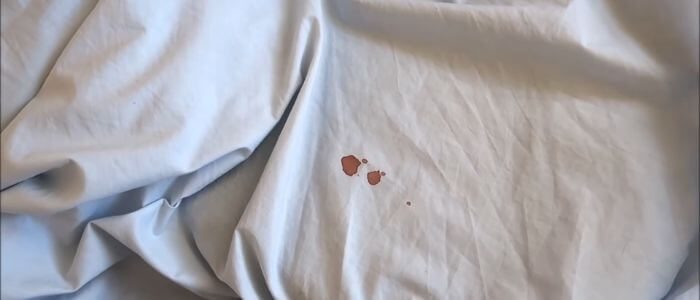
While people hate having blood stains on sheets, getting real blood is even worse. Choosing to throw it in the washing machine may remove the blood but fail to clear the blemishes for good. Don’t worry about the stains because we shall see later how to get rid of them. Let’s see how we can get blood out of your white sheets.
Immediately you realize the blood, flush the sheet through running water to drain the blood. It may be a bit difficult if the blood stays longer, but very easy if still fresh.
For people having white cotton sheets, apply shampoo on the sheet, and rub using your hands. When properly done, this step could be enough to get all the sheets blood-free.
Other materials may not work with shampoo, therefore, add half teaspoon detergent, one tablespoon ammonia, and a quart cool water, turn to mix the solution and submerge the sheets for soaking- 15 or more minutes.
You can add an enzyme cleaner and scrub as you look for possible bloodstains. Keep rubbing until it’s clear before you rinse.
For blood sheets that may have stayed for more than two days, use hydrogen peroxide and a few ammonia drops depending on severity and load. Let the solution rest for about 15 minutes before rinsing thoroughly with water.
Once you ensure there’s no stains or blood traces, run the sheet through the washing machine. Remember, only take it to the dryer after it’s free from any pigments.
Remove blood stains from white sheets

Bloodstains on sheets are well cleared, especially when still fresh and wet. Therefore, immediately you notice any reddish or dark blood on your sheets, head for a solution. You could use various methods, but bleach is involved, first, check the manufacturer’s label to ensure the sheet can survive in bleaching agents. If so, use the following instructions to renew it;
- If the blood is wet, place the whole sheet through running water to flush it out.
- If the stain/s can be seen rub it with bar soap or use hydrogen peroxide for staining, after that, scrub it using your hands in water.
- You can then in liquid detergent or laundry pre-treater and hand rub the remaining stain in hot water. Add a fabric-safe bleach if the stain doesn’t go.
- Please don’t put it in the dryer before the sheet is entirely free from the tint.
For already dried blood pigments, it may be a bit difficult to deal with as likened with the fresh one. However, below are three significant steps that can remove it no matter how much it’s sticking. For example;
Begin by pre-soaking in a stain remover such as Carbona Oxy or detergent and cold water mixture.
Add a safe fabric bleach- the time length may vary depending on the stain’s severity, then rub the area to remove the blood.
If the above doesn’t succeed, dissolve a teaspoon laundry detergent and the same amount of ammonia in water- reasonable amount, then spot treat the stain.
How to wash white sheets with bleach

What do you know about bleach? For whitening almost everything, right? It can even mess your fabric in case it spills on it. However, bleach on your white sheets does the opposite. It contains chlorine that reacts chemically with proteins in staining substances such as our body oils, sweat resulting in the disappearance of tints when washed and drained by water. For one to bleach, ensure;
- Proper ventilation of the room you’re washing from.
- The sheets are strong enough to bear the bleaches’ strength. Do this by testing a part of the sheet that’s inconspicuous.
- Any bleach spillage should be cleaned immediately with a damp cloth.
- Wear plastic aprons, or rubber gloves to strictly avoid direct contact with bleaches.
- Read the manufacturer’s instructions, if warned against bleaching, never use bleach on that sheet.
- The washing method should guide the bleaching type for use. For instance, use pen bleach or spray for stains and liquid one in a washing machine.
- Use bleaching agents specifically meant for laundry. Avoid mixing ammonia with whichever bleach as it may result in toxic gas production.
- Avoid bleaching leather, silk, and wool.
- Avoid direct use of concentrated bleach, diluting is crucial.
- Start by using regular laundry detergent for washing.
Bleaching procedure
- Begin by removing the staining element.
- Pre-treat using liquid laundry detergent and use a soft brush to scrub. Powdered detergent also applies.
- Check to ensure the sheet can be washed with hot water and bleach. If yes, pour water and laundry detergent into the machine.
- Take some amount of bleach- depending on the load and transfer into the machine’s dispenser.
- Switch on the machine and let it run for some time to allow the materials to mix properly, before dipping the sheets.
- Let it run for several cycles then rinse after getting satisfied by the results. If not, keep running the cycles.
Best way to wash white sheets
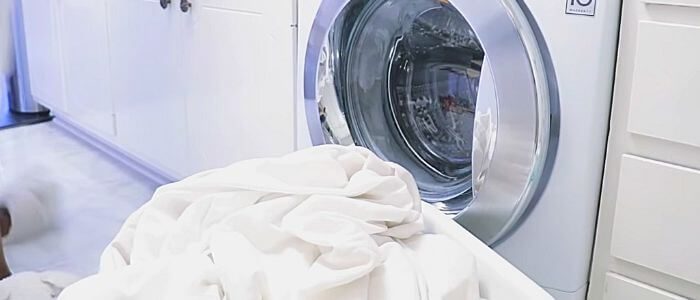
How often do you wash and change your sheets? Once a year, month, week, or every day? People have different preferences or circumstances that may bring a difference in how often we clean our sheets. Nevertheless, it’s recommended that you change at least once a week for health purposes.
Which is the best way to wash white sheets? Is it bleaching or pretreating? Ok, stains pre-treatment is an excellent way for small stains removal. On the other hand, bleaching works best for dirty whitening sheets or those with more significant conspicuous stains.
After washing your sheets, it’s imperative adhering to the drying temperature instructions given on the sheets’ labels. It’s because high temperatures may consequently shrink, wrinkle, or over dry some materials, thus weakening the fibers. Double-checking also helps to understand if you should untangle the sheets or toss back.
Precautions for maintaining white sheets
- Regularly change sheets at least once a week. Weekly replacement serves to protect the sheets’ longevity, keeping them in the best shape.
- Learn to avoid eating in bed. You can’t imagine how bad spilled coffee makes your white sheets ugly. You may rely on the power of washing agents and bleaches, but you can’t compare with how much time and effort you’d save if you didn’t stain.
- Remove make before going to sleep. It’d be helpful if you wash all day’s make p to clear your face of oil, color, and sweat that easily sticks on pillows and sheets.
- Avoid washing white sheets in cold water as much as possible.
- Never mix white sheets with other clothing types when washing- wash them separately.
How to get period blood out of white sheets

The uncomfortable reality is that more than the world’s half population bleeds monthly, meaning our sheets may inevitably get stained with period blood. Well, we don’t blame anyone. It’s something to embrace. If it unluckily happens to your sheets, never think of getting rid of your sheets entirely because we’ve got a variety of solutions.
You only need a little emphasis and material accessibility to totally eliminate the stains. If you woke up to blood in your sheets during your period, clear the mess by;
Running the sheet under cold water
Running it via cold water should be the first step once you notice the blood. It helps rid of fresh blood, though it may as well work for dried blood. Remember, cold water is the best. Don’t mistakenly use hot, as it can cook the blood and make the stain permanent.
Fresh stains simply need cold water and a small amount of bar soap or detergent application. Be sure to completely get the stain away.
Pretreating
In case cold water fails after repeating the process-maybe because it’s an older stain or dried, you can pretreat before using the washing machine. There are a number of pre-treatment materials one can use, including salt, bleach, hydrogen peroxide, meat tenderizer, and baking soda.
Apart from using salt for adding taste to food, how else do you use it? What if I told you the magic salt can perform in stain removal, will you believe? Yes, it does miracles to blood pigments on white sheets. Rub the salt on the affected area, then soak it in cold water.
Another remedy is soaking it in hydrogen peroxide and lemon juice. Take around 15 minutes before taking it to the washing machine. Don’t forget to still use cold water and dry only after the stains are pure. Do the same with a paste of meat tenderizer.
Crushed aspirin mixed with baking powder in water is another method. Stir to dissolve the mixture before dipping your sheets and soak it for 30 minutes, then wash and dry.
How to remove sweat stains from white sheets
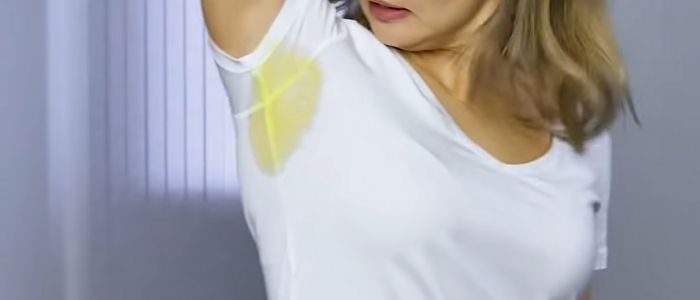
Sweat stains are so bad at discoloring and making sheets dull. The stains may not be gotten rid of by regular detergents and bleaching agents. Still, we have other cleaning agents that can remove sweat stains altogether. For example, among the best methods is soaking the sheets immediately, you notice the stains before running through the washing machine.
You can apply baking soda or vinegar to quickly remove the stains. You can as well ‘blue’ them to remove the sweat tint.
Soaking
- Fill the basin with hot water.
- Add an oxygen bleach scoop to the water. Ensure it dissolves entirely and evenly.
- Completely submerge the sheets in the mixture.
- Occasionally agitate the sheets using your hands. Do this twice or thrice at intervals.
- Let them stay for an hour or overnight, depending on the stain’s severity.
- Use the washing machine and apply normal detergent.
- Once you get satisfied, dry the sheets or use the hanging line.
Baking soda
- Place the sheets in the washing machine.
- Add regular detergent and half cup of baking soda in the machine’s dispenser.
- If the stains are fresh, use cold water, and hot if they’re old.
- Run the machine normally before adding half cup vinegar at the start of the rinsing cycle.
- Check to confirm if they’ve returned to being white. If not, run them through the washing cycles again.
Bluing
Bluing white sheets can make them whiter and better looking. We have different bluing agents, including Mrs. Stewart’s liquid, Bluette, and Reckitt’s blue. They whiten the sheets removing the sweat stains.
- Get a bluing agent from the grocery or online store.
- Following the instructions provided on the packet, dissolve it in cold water- the amount depends on the stain’s condition and sheets number.
- Add normal detergent on the washing machine.
- Add the mixture at the rinse cycle stage.
- Use the dryer or hang on the clothesline.
How to remove yellow stains from white sheets
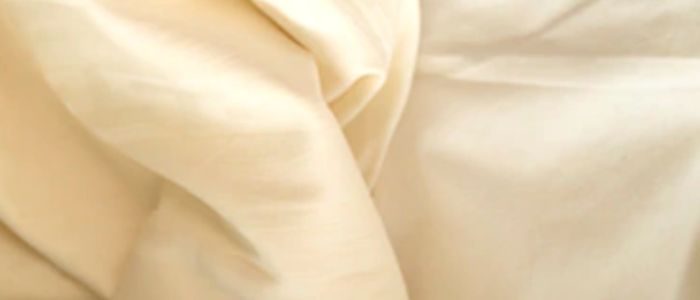
It’s very normal having yellow stains on your white sheets. However, that shouldn’t matter because we’ve got various methods of getting rid of such stains. They are;
Bleaching
Using bleach to clear yellow tinting on your sheets is among the surest ways of restoring their color. It can either be a specific area or the whole thing. If it’s the entire sheet, you can choose bleaching wash using handwashing or the machine. Either of them work very well. Use the following procedure for machine washing;
- Fill it with hot water until full.
- Add a cap filled detergent and the same amount of bleach.
- Give time for the two to be equally distributed in the water.
- Have the machine run as usual.
If you lack the washer machine, you can let the sheets soak in the mixture for some time before using your hands for washing and rinsing. It still gives great results.
Vinegar
This is another great option of clearing stains that works by pre-soaking. You can choose to singly use it or combine it with other methods. Start by;
- Add a vinegar cup into a water gallon.
- Let the two mix equally before dipping your sheet.
- Soak the sheet for an hour or more.
- Once it soaks, wash it using normal washing methods.
You don’t have to buy new sheets for replacement just because of staining, you can use either of the methods to get them back to their usual attractive white color. Simply use the procedure as outlined.
How to whiten yellowed stains
There are various methods and substances for whitening yellowed sheets. However, using oxygen bleach is the most successful for stubborn yellow stains. The guide below will help completely eradicate the yellowness and bring back your sheets’ white color. Remember, start by reading instructions from the sheets’ manufacturers and those of the bleaching agent before any attempts. They are;
- Fill the sink with warm water.
- Add an OxiClean scoop and stir to evenly distribute in the water.
- Dip the yellowed sheets ensuring the stained parts are fully submerged.
- Rub a thicker mixture of OxiClean on the yellowed areas before leaving in the solution for soaking.
- Let it soak overnight. Mild stains can only soak for an hour or more.
- Wake up to do the usual laundry with detergent of bar soap.
Grey sheets white duvet
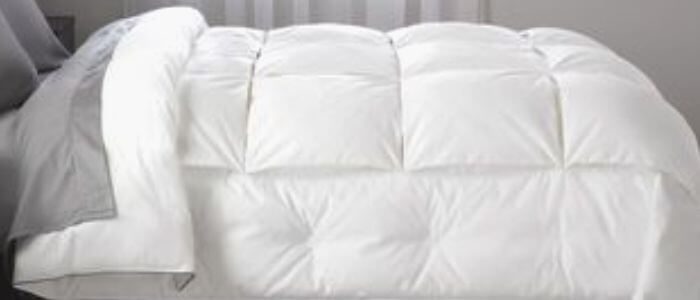
While it may seem easy, maintaining a flawless white duvet clean. It can be stained with stuff like pet hair, body oils, and accidental spills. No one can risk the health hazards coming with bacteria and germs from some of these stains. Contrary, over washing or failing to wash may damage the delicate fabrics and fibers and ruin the white color.
Stain removal procedure
- Manipulate the duvet, ensuring the stained area doesn’t have touch with other parts.
- Apply a small amount of detergent on the affected part. You can also use other cleaning agents- baking soda, Woolite, vinegar solution for soaking before washing. Never use bleach.
- Blot the stain with a clean cloth piece.
- If that doesn’t work, rub the area together with your hands to loosen the stain, then rinse with water.
- Squeeze the extra water and block using a clean cloth.
- Dry the cleaned area. Use the same procedure on grey sheets.
How to remove oil stains from sheets
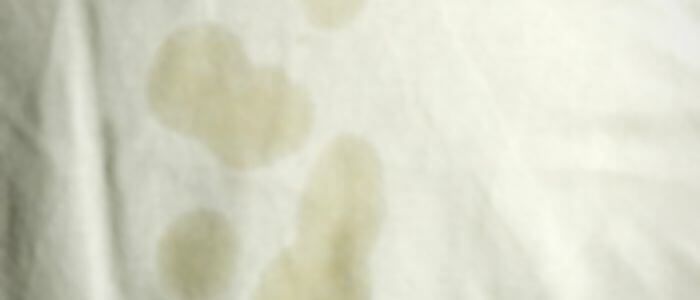
Some people have a lot of sebum production from their skin. Sebum is a skin secretion substance lubricating the skin and may produce acne when in excess. The plenty of production is what messes people’s sheets when they cover themselves, staining sheets and clothing. It happens mostly with teens and young adults.
Procedure
- Run the oil-stained sheets via normal washing with a detergent of choice plus hot water.
- Add extra hot water plus a teaspoon dish soap for removing the grease, an additional laundry detergent type, and quarter baking soda cup. The soda acts to neutralize body oil smells and fabrics, unlike bleaching items.
- Agitate the mix for some time and give it time to soak, maybe overnight.
- Once it’s soaked, drain the water and, once again, run the sheets through the washing cycle. Use half cup vinegar rather than fabric softener for preventing any other oils from attaching to the sheets. Do it up to the point of satisfaction.
- Use a dryer or hang outside in the sun.
The Bottom Line
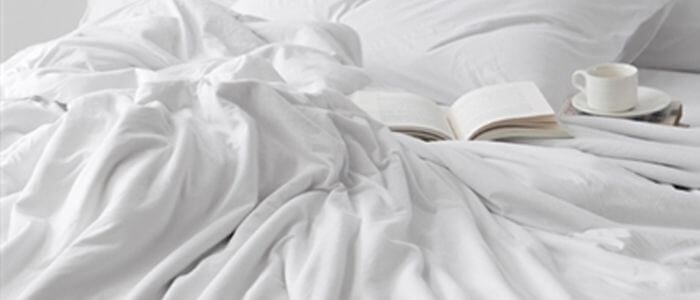
How do you feel after getting the knowledge on how to remove stains from white sheets, relieved? White clothes and sheets are susceptible to dirt. That’s why they need to be treated with care. It’s essential to take precautions when dealing with white bedding.
Avoid eating, watching movies, working, or playing with pets from your bed. Coffee spillages or ink can be frustrating when they get to these sheets. However, in case accidents happen, don’t worry because we have various methods of getting rid of these stains- ink, yellow, sweat, oil, period blood, among others. For instance, there’s the use of bleaching agents, baking soda, and vinegar for soaking, pretreating with detergent, bluing, and others.
When cleaning using bleaches to washing sheets, you should first go through the manufacturer’s warnings. It’s vital to ensure the material can withstand the bleaches strength. It might damage the fabric and ruin the sheets’ appearance.
